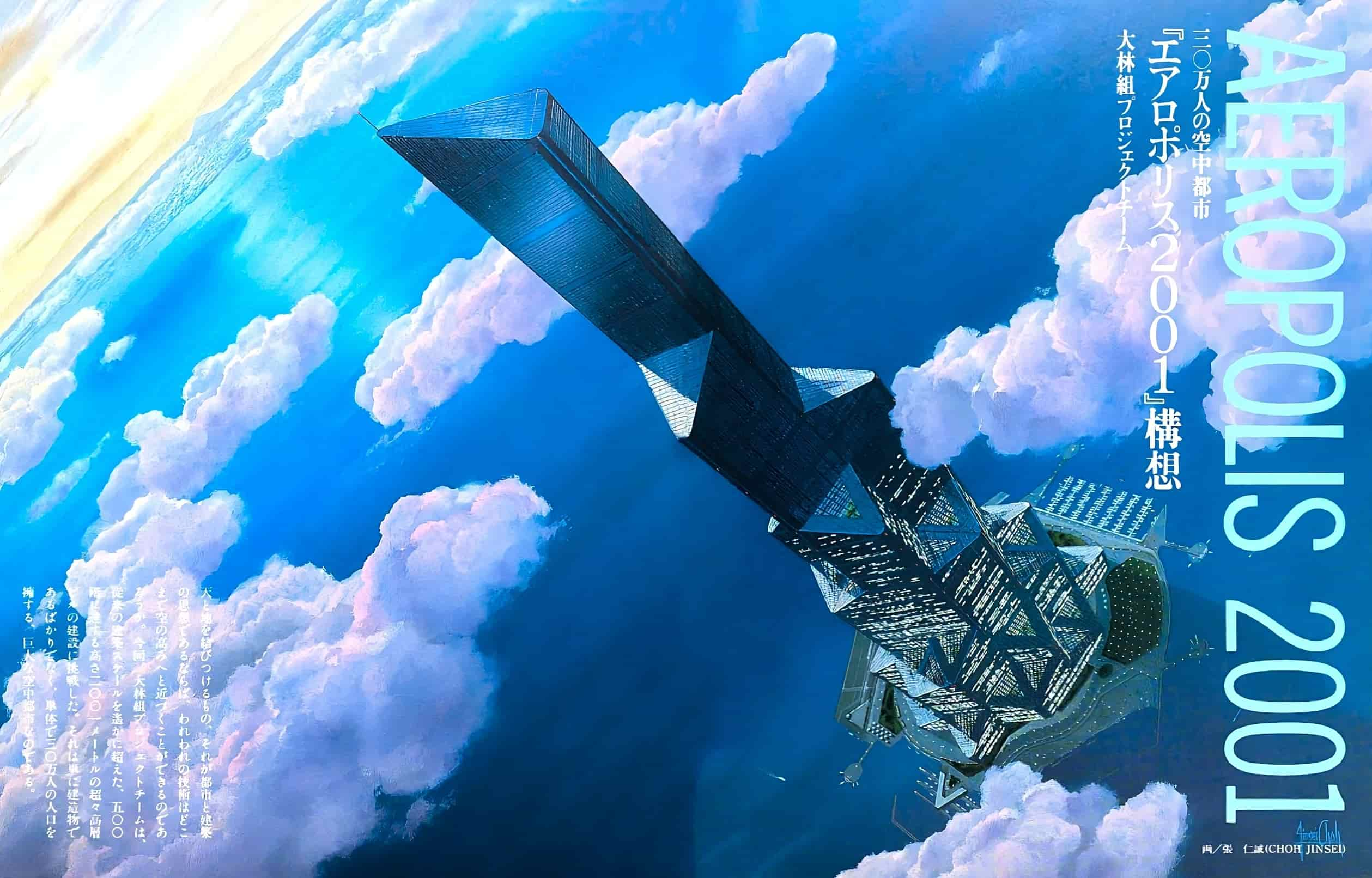X-Seed 4000 is a 13,100-foot (4,000-meter) tall megastructure with 800 floors. It has a capacity for 1 million people living inside at the same time. The X-Seed 4000 is a floating “ocean city” off the coast of Japan. It is designed as an artificial island and will be home to a million people once completed. This unfinished ultra-skyscraper project was first conceived by Taisei Corporation in 1995. With 17,300 acres (7,000 ha) of total floor area, the base floor is 21,300 feet (6,500 m) in diameter and located on the sea. The width of X-Seed 4000 gradually narrows as it rises. And the skyscraper takes on the shape of Mount Fuji, Japan’s highest mountain at 12,388 feet (3,776 m). Each of the 30 floors of X-Seed 4000 is completed every 330 feet (100 meters).
FAQ About the X-Seed 4000
When is the X-Seed 4000 going to be built?
The precise answer is unknown, but a project like the X-Seed 4000 is unlikely to be built within the next 50 years.
Who designed the X-Seed 4000?
The design of the X-Seed 4000 is based on Peter Neville’s ideas. This unfinished ultra-skyscraper project was planned by Taisei Corporation in 1995.
What is the X-Seed 4000?
X-Seed 4000 is an ocean city that is 13,100 feet (4,000 meters) tall with 800 floors and a capacity of 1 million citizens. The building was intended to solve Tokyo’s overpopulation problems.
The Cost of X-Seed 4000
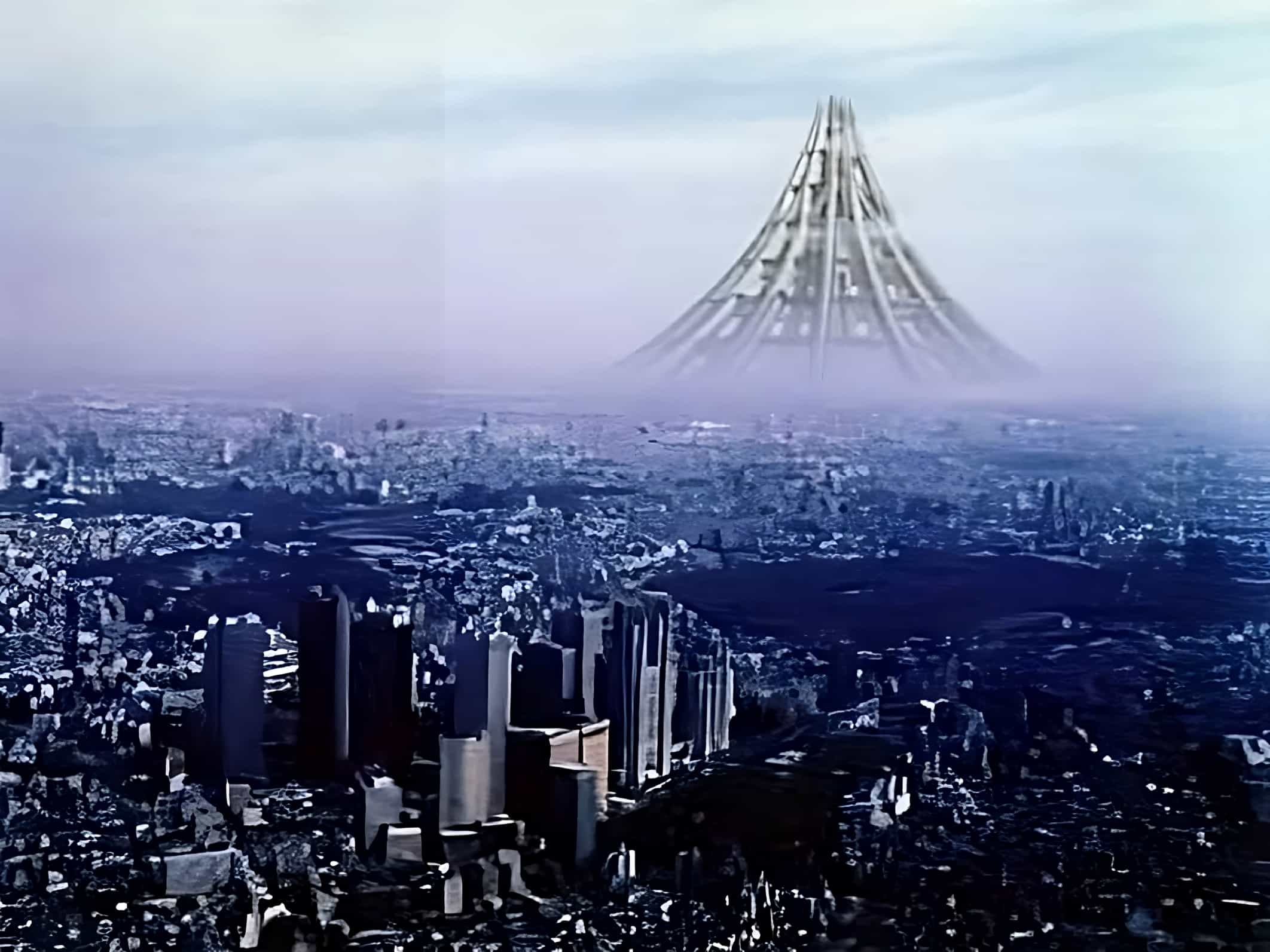
Projects like X-Seed immediately conjure up images of Earth’s inevitable transformation into an ecumenopolis or multicultural metropolis. This is similar to Coruscant from Star Wars.
The building’s most distinctive characteristics are its sea-based location and its form which was inspired by Japan’s iconic Mount Fuji. It has the form of a pyramid, with several nodes connected by long, snaking tubes. Each node is like a miniature city. There are enough facilities inside—including a gym, a supermarket, and a garden—that its residents wouldn’t need to leave the building.

More than three million tons of steel would go into making this superstructure. Thus, the construction of X-Seed 4000 was expected to take 30 years and cost 170 trillion yen, or 1.3 trillion USD. As the first man-made mountain ever envisioned, the cost of building X-Seed 4000 would be more than the yearly budget of several nations. But the price tag might vary. It amounted to around $900,000,000,000 in 2006 dollars and approximately $1,000,000,000,000 in 2016 dollars. In 2023, the X-Seed 4000 would cost 1,300,000,000,000 USD in today’s money.
X-Seed 4000’s Design

If built, the X-Seed 4000, with a height of 13,100 feet (4,000 meters), would be the second-tallest man-made structure ever proposed. It would be behind the enormous Tokyo Tower of Babel (6.2 mi or 10 km high). Because at its current elevation, the building is almost halfway up Everest (29.030 ft or 8.849 m high).
As a visionary project, X-Seed 4000 is an example of arcology because of its focus on preserving biodiversity. With its tapered logarithmic structure, cone shape, large base, and gradually narrowing upper sections, the structure is well-equipped to withstand any force applied to it and not collapse.
Because of its elevation, its summit would always be blanketed in snow, making it ideal for use as both a ski area and a weather observatory. There would be a university among other amenities like parks, hospitals, and marinas. This is because the city is being constructed on an artificial island. The project is intended to solve Tokyo’s overpopulation and environmental problems. That is why it is more than just a simple skyscraper.
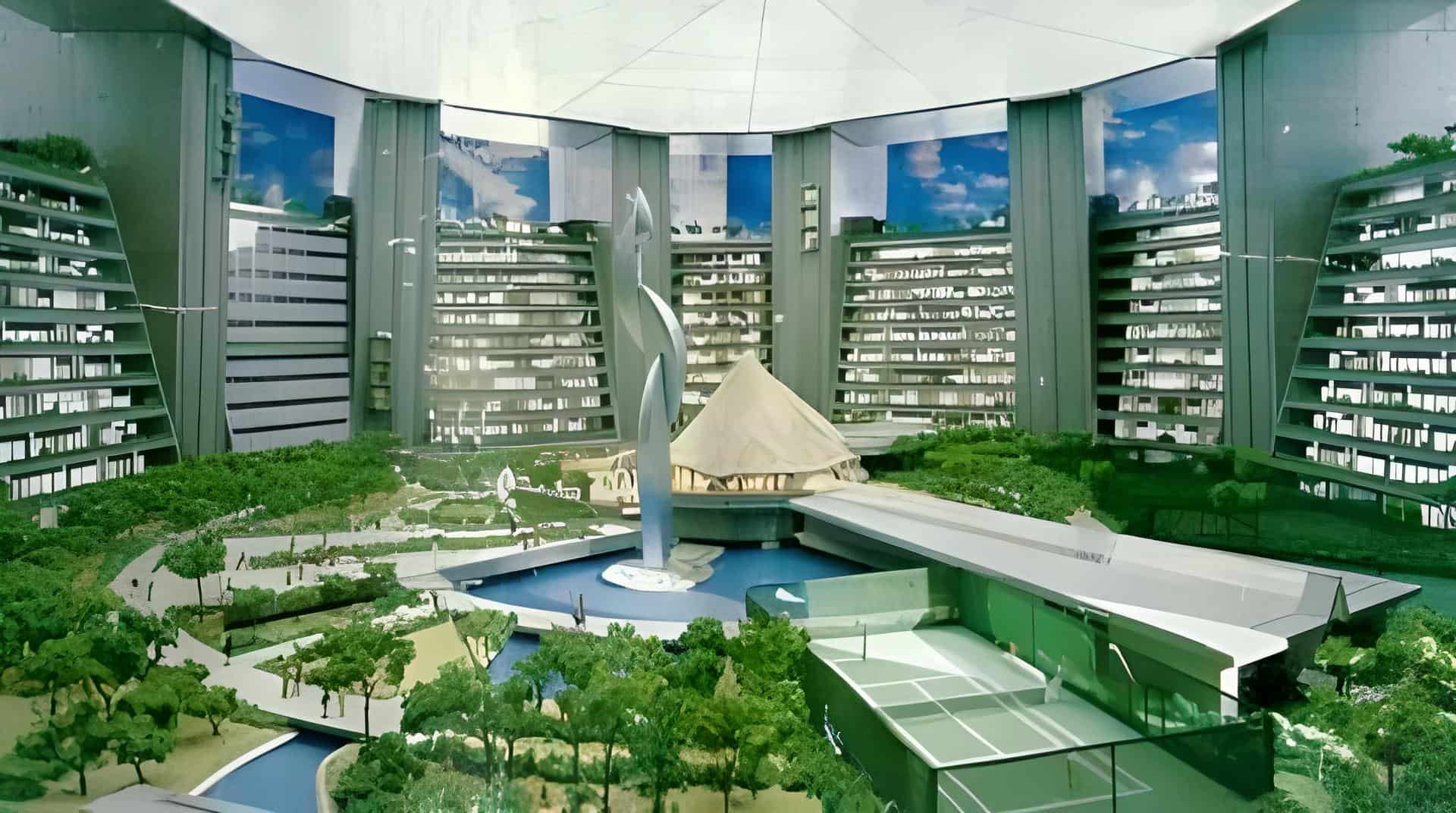
X-Seed 4000’s Construction Site
The imagination of the planners is unbounded. Often, new ideas are formulated that seem to be straight out of science fiction. But in fact, they are the result of extensive research and careful calculation. However, only a small fraction of these proposals will be workable, at least in the next 30 years.
The design of the X-Seed 4000 is based on Peter Neville’s ideas. However, since this construction is notoriously challenging, no viable options for the project have been explored until now. Due to the project’s massive magnitude, the construction location chosen for X-Seed 4000 is to be on Tokyo Bay and on water. The supertall skyscraper would cover 26 square miles (26 km2) of land at its foundation in Tokyo Bay. This makes around 750,000,000 square feet of living and working space.
Yes, X-Seed 4000 is a “sea mountain.” Because the only practical site to construct such a massive structure is on the water due to the lack of land suitable for the task.

The Features of X-Seed 4000
The 4000-meter, or 2.5-mile, steel mountain is supported by a 600-meter-thick steel base, allowing X-Seed 4000 to float on the ocean. A large number of separate “building cells” are housed in the open-style steel framework. Steel legs hold walkway connections. Massive magnetic elevators can carry as many as 200 passengers through the steel arms at once. Skiing is always possible all year at the top of the building, and it takes around 30 minutes to reach the top of the building thanks to Maglevs (magnetically levitated speed trains).
The X-Seed 4000’s first blueprints were drawn up back in 1980. However, no one had ever really thought seriously about building it. Constructed in the form of a mountain, the skyscraper is a state-of-the-art structure that blends cutting-edge technology with an eco-friendly design. If X-Seed 4000 were to be built, it would be taller than many tall mountains in the world. In fact, it would be almost 738 ft (225 m) higher than Mount Fuji, the highest mountain in Japan, and the seventh-highest peak of an island on Earth.

Internally, an electromagnetic train system transports both people and cargo across the complex. Unlike other skyscrapers, the X-Seed 4000, with its towering height, must protect its occupants not just from the forces of gravity but also from the changing temperature outside. Ecological comfort is ensured by the presence of environmental controls in the building.
The blueprint of the structure includes the use of solar power for heating and cooling purposes. In X-Seed 4000, photovoltaic energy controls light, temperature, air pressure, etc. to power the whole microclimate support system.
Given its location in the Asia-Pacific volcanic region, the X-Seed 4000 must be resilient enough to weather tsunamis and earthquakes. This is a region called the Pacific Ring of Fire, the world’s strongest volcanic activity zone. The same threats will also be experienced by the Shimizu Mega-City Pyramid. The structure’s enormous height makes it ideal for shielding its residents directly from severe air pressure differences and extreme climatic shifts, unlike “regular” skyscrapers.
The Purpose of X-Seed 4000

There have been rumors that the Japanese were about to start building the X-Seed 4000 skyscraper some time ago. But this does not appear to be the case anymore. Georges Binder, general director of Buildings & Data, a company that maintains information on buildings throughout the globe, claims that the X-Seed 4000 will “never be built.” According to Binder, the purpose of this plan was to build a reputation for the company, and it worked.
In 2007, when the Sears Tower and the Taipei 101 were fiercely competing to be named the world’s tallest building, rumors began circulating that Taisei was planning to construct X-Seed. In theory, it could surpass the current tallest building in the world, the Burj Dubai, with 828 meters (2,716 feet) in height. Even though it seemed like the project wouldn’t get off the ground, the building has become something of a legend in recent years.
Shohei Ogawa, manager of Taisei’s worldwide division’s planning department, says that the company currently has no plans for the X-Seed 4000. The whole project was the company’s fantasy proposal for the kinds of technical progress they envisioned for the future.
Is X-Seed 4000 Possible to Build?

The X-Seed 4000 was inspired by a 1966–1967 proposal by V.I. Travush and also M.V. Nikitin at the request of a Japanese firm. M.V. Nikitin was the primary designer of the Ostankino TV tower in Russia. But it was later decided to put an end to the project indefinitely. Today, the X-Seed 4000 is recognized in large part because the project’s blueprints were actually finalized by the construction firm. As such, it is a structure that could have been erected had full construction plans been developed utilizing the technologies available at the time.
While it may seem impossible to build X-Seed 4000 now, the goals are actually within reach. Because almost any building project with any span or height is feasible to build from a technical perspective. The electromagnetic trains, or Maglevs, could make such a big building easy to navigate around and eliminate the time people wait for an elevator to reach the 800th floor. However, the project may still not be practical in reality.
The Challenges to Building X-Seed 4000
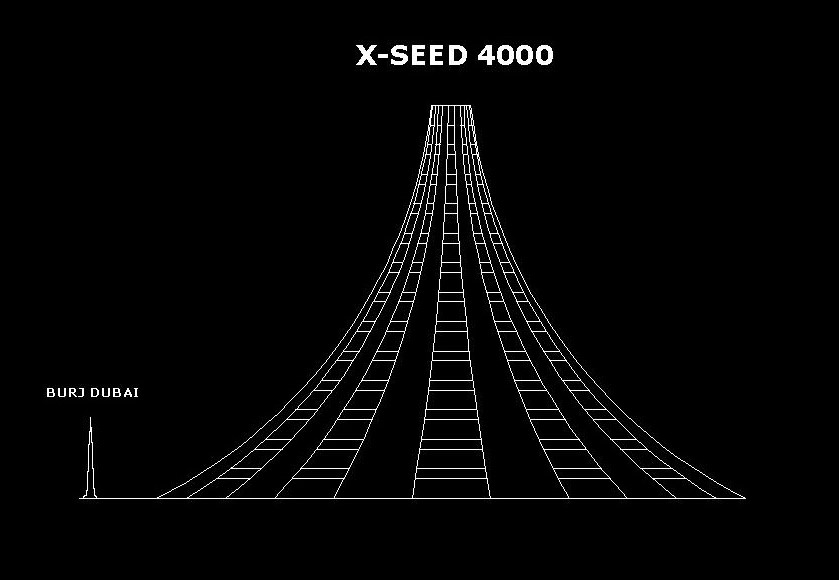
Financing a project that may cost over a trillion dollars is challenging. This includes acquiring the required permissions to erect the structure. Because no citizen would want a 2.5-mile-high skyscraper next to them. A two-mile-high skyscraper will already cause a downdraft at its base and throw lengthy shadows on citizens, almost darkening the streets permanently.
Elevators, water systems, and fire safety equipment may be particularly challenging to install in a skyscraper that would be almost five times higher than the current highest building in the world. For starters, the sky-high expenses of building and maintaining such a large skyscraper that costs trillions would make it unaffordable for the vast majority of people. Intensifying the building’s population might help lessen the financial pressure. The costs would be more fairly divided only if 100 million people lived there instead of 1 million.
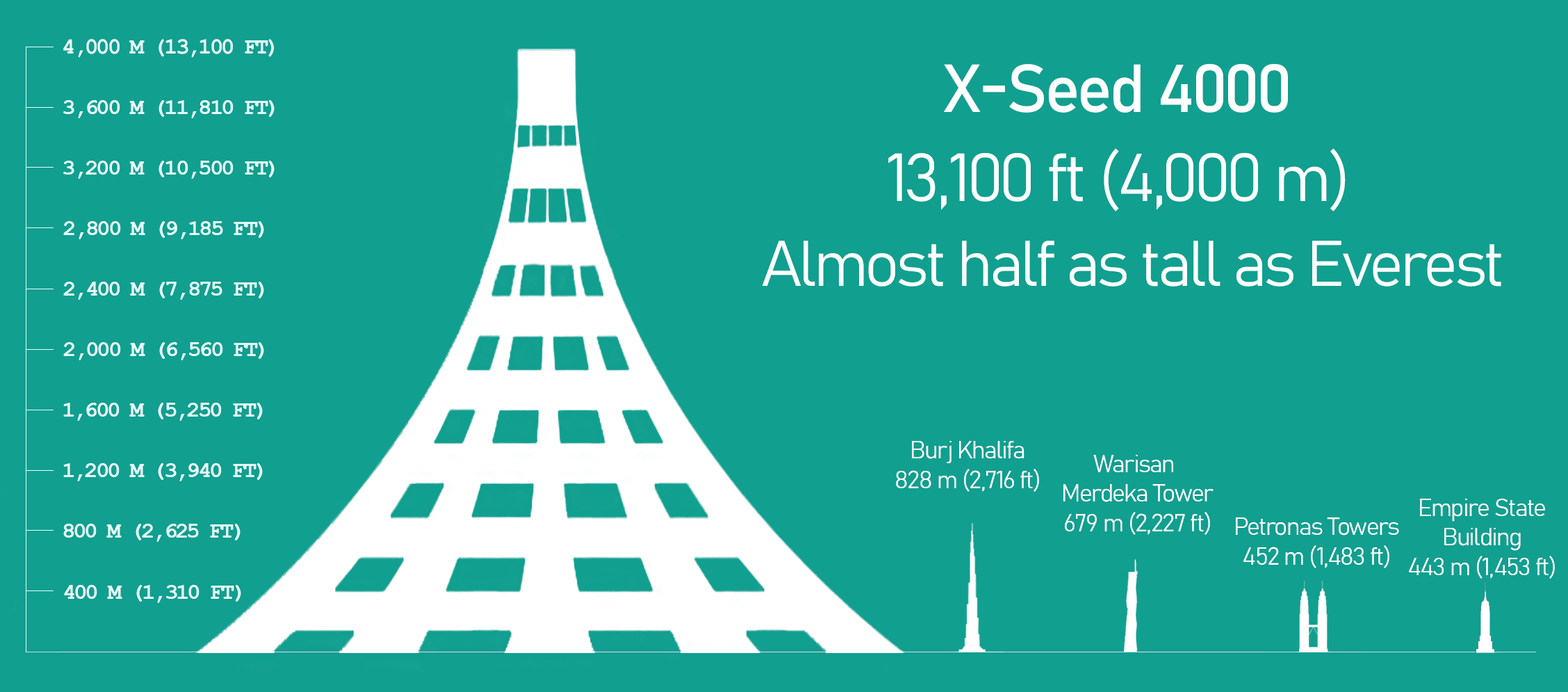
Building X-Seed 4000 as envisioned is impractical due to the project’s scale. Not only are the production costs too high, but there are also collateral issues with real experimentation and the verification of natural accidental loads. At such an extreme height, this includes structural oscillations caused by wind and a different atmospheric pressure. Let’s not forget the reactions of those who will live in the building and the implications for them. Those factors make the project problematic.
It’s not clear how many engineers will be needed and how they will be managed to build such a structure. Since Japan’s population is forecast to decrease by the year 2050, the megastructure, which was built to accommodate a rapid population increase, is becoming more irrelevant. It’s quite unlikely that the X-Seed 4000 project will ever go forward.
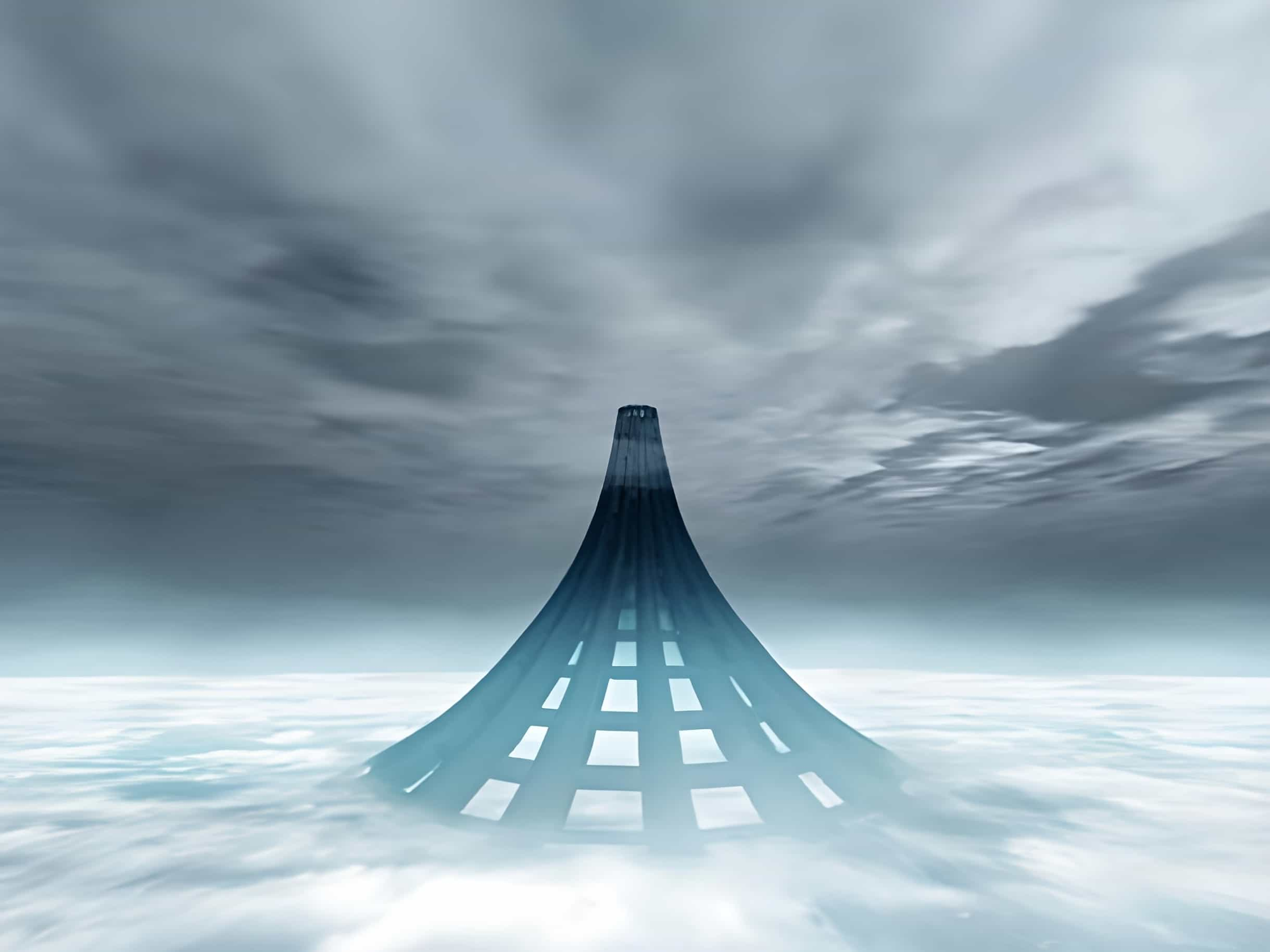
The World Financial Center (2008) in Shanghai, designed by Kohn Pedersen Fox Associates, is an excellent illustration for building tall structures. The shape of this building is like a blade with a huge porthole at the top. It is designed specifically according to the characteristics of the most frequent winds in the area to limit the impact of these gusts on the skyscraper and the people who work inside it.
The Tallest Man-Made Structures Ever Planned
San Francisco’s 3,218-meter (10,558-foot) Ultima Tower, Dubai’s 2,400-meter (7,900-foot) City Tower, Japan’s 2,004-meter (6,575-foot) Shimizu Mega-City Pyramid, and either Hong Kong’s or Shanghai’s 1,228-meter (4,029-foot) Bionic Tower is one of the five tallest man-made structures, along with Tokyo’s 13,100-foot (4,000-meter) X Seed 4000, ever planned in the history of mankind.
Bibliography
- Taisei Corporation’s Official Webpage Regarding X-Seed 4000.
- Michael Anissimov (2006). “Accelerating Future » X-Seed 4000”. Archived.
- Ernest Burden, Visionary Architecture: Unbuilt Works of the Imagination. Amazon.




